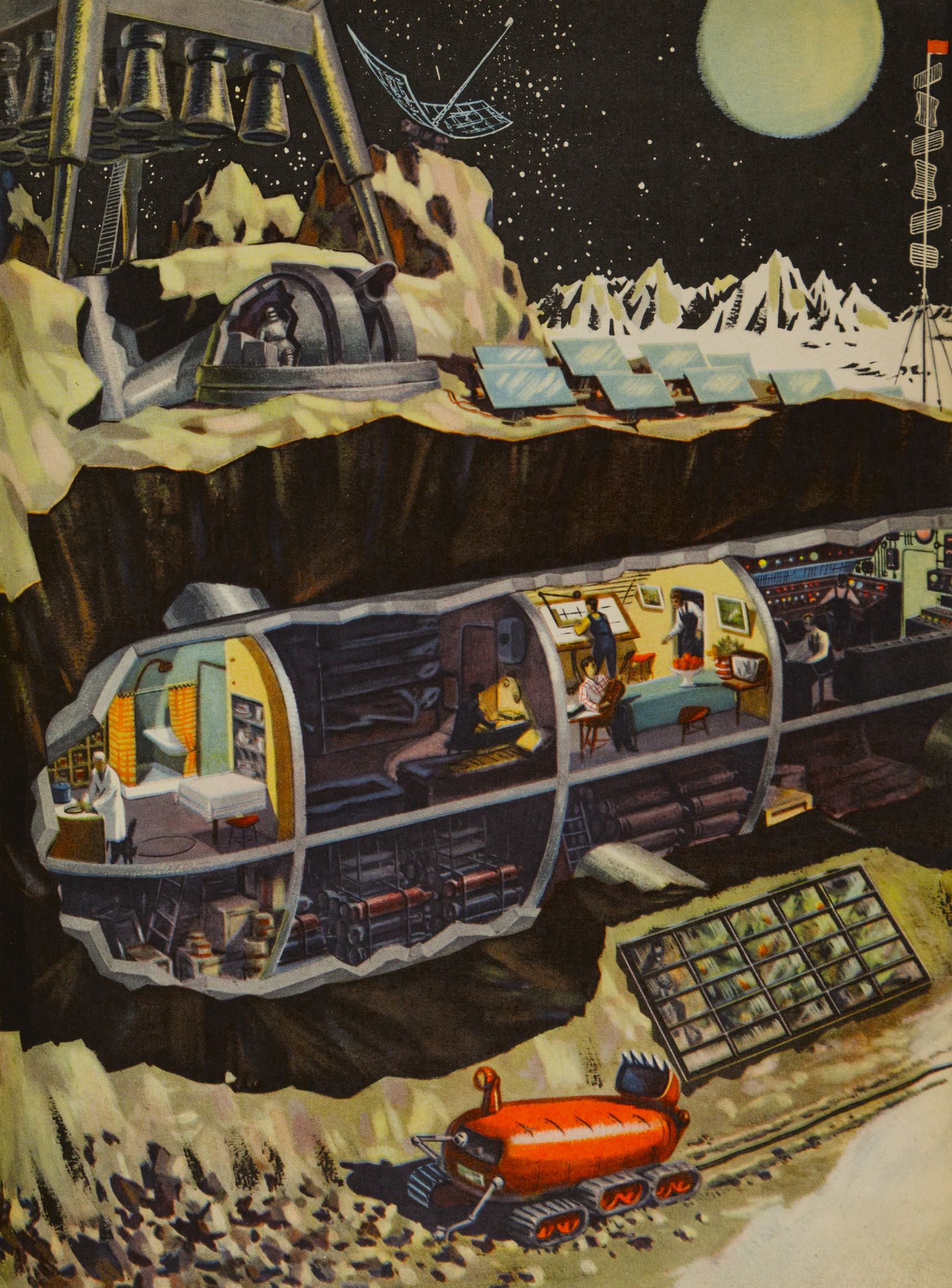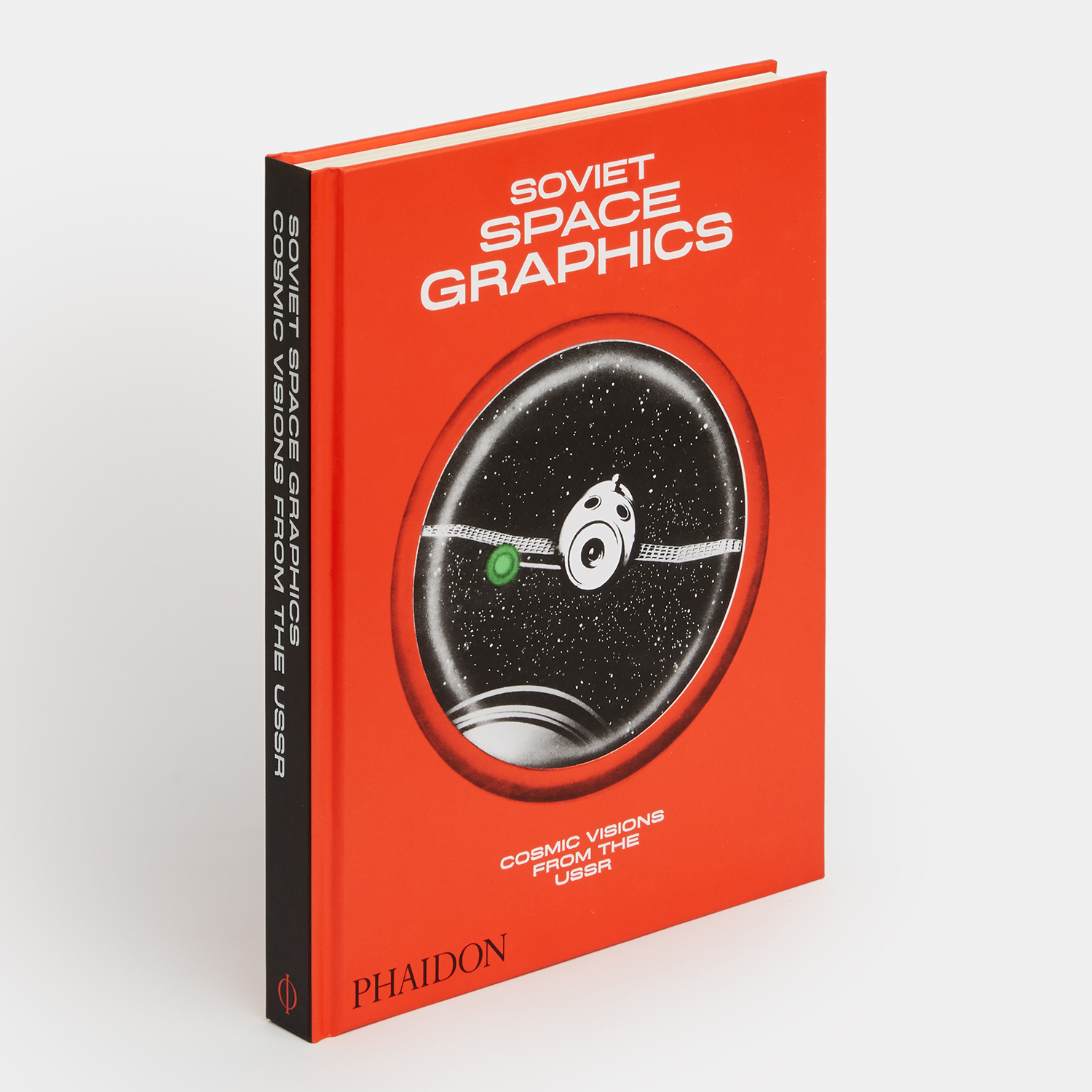
Soviet Space Dreams: Spreading Communism from the Moon
Our new book, Soviet Space Graphics, recalls a time when Russian popular science magazines flirted with fiction
You don’t have to go back so very far to recall a time when the Soviet Union seemed like a herald of future progress, rather than a relic of the past. It was the American progressive journalist and campaigner Lincoln Steffens who, on returning from revolutionary Russia in 1919, declared “I’ve seen the future and it works.”
Although not everyone agreed with Steffens sentiment, the Soviets’ early, pioneering achievements in space exploration certainly suggested they were on a fast track towards the future. As our new book Soviet Space Graphics: Cosmic Visions of the USSR notes, the Russians launched the first satellite, and the first intercontinental missile.
They were rocket pioneers, put the first dog, the first human, the first woman, and the first two- and three-man crews into space; carried out the first spacewalk; created the first spy and communication satellites; and launched crafts towards Venus, the Moon, and Mars.
This illustration, published a full decade prior to the successful US mission to the Moon, might look like a work of science fiction, but the drawing by B. Dashkov, for the article 'What Would a Space Station on the Moon Look Like?' was certainly presented as a fully working vision of things to come, rather than a piece of speculative, quasi-fictional whimsy.
The picture appeared in a 1959 edition of the Russian magazine Technology for the Youth, which 'chronicled all major advancements of science and technology: the rise of industrialization, the development of nuclear energy, numerous inventions, innovations and discoveries, and, of course, the USSR’s fundamental role in (and contribution to) space exploration,” explains our new book. The magazine did also publish fiction by such writers as Arthur C. Clarke, alongside works by and profiles of leading scientists, such as Robert Oppenheimer.
Founded in 1933, when the Soviet Union was at its highest standing internationally, Technology for the Youth is, despite the fall of the USSR, still in publication. According to a recent report on its site, Russia (in conjunction with the European Space Agency) is creating the first-ever 3D map of the Moon, in preparation for unmanned Moon missions, but also putative manned ships, which might take place at some point in the coming years. Maybe Dashkov isn’t so much as defunct, but just a few decades too early?

To see more works such as these, and to better understand the artistic side of the Soviet Space Race order a copy of Soviet Space Graphics: Cosmic Visions of the USSR here. This otherworldly collection of Soviet space-race graphics takes readers on a cosmic adventure through Cold War-era Russia. The 250-plus extraordinary images featured, taken from the period's hugely successful popular-science magazines, were a vital tool for the promotion of state ideology. Soviet Space Graphics unlocks the door to the creative inner workings of the USSR.